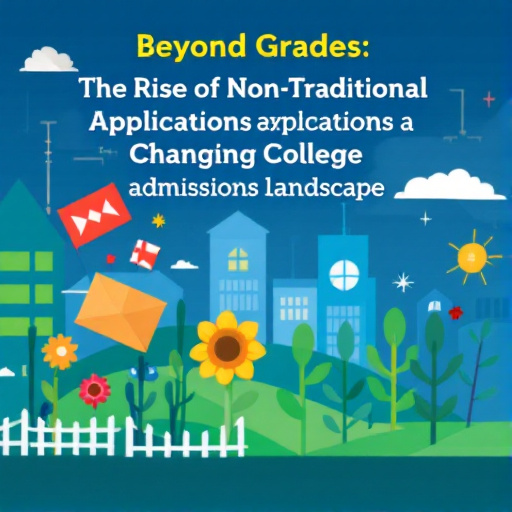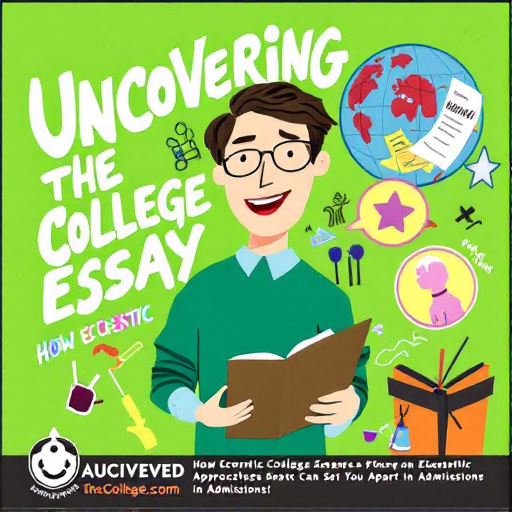Featured Articles
- 5 Unexpected Financial Aid Secrets Every College Applicant Must Know Before You Submit
- "Beyond Grades: How Mental Health Spaces Are Shaping College Applications in 2023"
- "Beyond Grades: The Rise of Non-Traditional Applications in a Changing College Admissions Landscape"
- Beyond the Basics: How TikTok Influencers are Shaping College Application Trends in 2023
- The Hidden Cost of College Applications: How Mental Health Influences Admission Success
5 Unexpected Financial Aid Secrets Every College Applicant Must Know Before You Submit
5 Unexpected Financial Aid Secrets Every College Applicant Must Know Before You Submit
5 Unexpected Financial Aid Secrets Every College Applicant Must Know Before You Submit
1. Early FAFSA Submission Increases Your Chances
Many students believe that submitting the Free Application for Federal Student Aid (FAFSA) by the deadline is sufficient, but submitting it early can make a significant difference. Some schools have limited funds that are distributed on a first-come, first-served basis, meaning early applicants have priority access. Therefore, applying as soon as the FAFSA opens, typically on October 1st, can enhance your chances of receiving aid.
Early submission also enables students to correct or update any errors or additional financial information before the deadlines. These corrections can influence the amount and type of aid offered. Additionally, submitting early gives families more time to review award letters and plan accordingly.
Sources such as the U.S. Department of Education emphasize the importance of early FAFSA submission to maximize aid potential. Therefore, procrastinating until the last minute can limit financial aid options or even cause you to miss out completely.
2. Scholarships Aren’t Just for Straight-A Students
It’s a common misconception that scholarships are only awarded to students with perfect grades or exceptional athletic ability. In fact, many scholarships target a broad range of talents, interests, careers, and personal backgrounds. From community service and artistic ability to intended majors or even unique hobbies, there is a scholarship out there for nearly every applicant.
Students should explore niche scholarships that align with their personal stories or goals. Local organizations, employers, and even places of worship sometimes offer awards that are less competitive and highly rewarding. Using online scholarship search tools can help uncover these lesser-known opportunities.
By broadening their search beyond academics alone, applicants can discover unexpected financial aid avenues, reducing reliance on loans and making college more affordable.
3. Don’t Overlook State Financial Aid Programs
Many students focus exclusively on federal aid and institutional scholarships, but states often provide significant financial aid programs with varying eligibility requirements. These programs can include grants, scholarships, and tuition waivers that reduce college costs substantially for residents.
Each state’s higher education agency website typically lists available aid programs and application instructions. Some programs prioritize first-generation college students, fields of study critical to the state’s workforce, or students attending in-state institutions.
Being informed on your particular state’s offerings and deadlines can yield surprising financial benefits. Exploring these state-specific opportunities may reduce the burden of education expenses substantially.
4. Your Family Income Isn't the Only Factor
While family income plays a crucial role in determining financial aid eligibility, other factors also influence aid awards. Variables such as family size, number of siblings in college, assets, and even special circumstances like medical expenses can affect your Expected Family Contribution (EFC).
The FAFSA and colleges often allow families to report unusual circumstances that may lower the EFC and increase aid eligibility. Counseling offices can help applicants understand how to report these situations properly to maximize their aid potential.
Recognizing that financial aid formulas consider a range of financial details can encourage families to provide comprehensive information, leading to better financial aid packages.
5. Financial Aid Appeals Can Work
Receiving a disappointing financial aid offer isn’t the end of the road. Applicants have the option to submit an appeal if their family’s financial situation has changed or if there were errors or omissions in the original application. Appeals can result in increased aid.
Common grounds for appeal include job loss, medical emergencies, or additional unexpected expenses not reflected on the FAFSA. Writing a clear, honest appeal letter and providing documentation can make a strong case for reconsideration.
According to the National Association of Student Financial Aid Administrators (NASFAA), many schools have formal appeal processes that applicants should not hesitate to use. Persistence and clear communication can often yield better financial aid results.
6. Work-Study Isn’t Just Extra Cash
Many applicants view the Federal Work-Study program merely as a way to earn some money, but it can offer additional benefits. Work-study jobs are often on campus and flexible, allowing students to balance work with their academic schedules more easily.
Furthermore, work-study experiences can build relevant professional skills, improve resumes, and sometimes even lead to career opportunities after graduation. Employers often see work-study students as reliable and committed employees.
Understanding work-study as a valuable component of financial aid rather than simply pocket money can help students better utilize this resource during college.
7. Merit Aid is Available After Admission
Some students expect merit scholarships only to be awarded before they apply or during their admission process, but schools frequently reconsider merit aid after students have been admitted. Updating colleges about new achievements or awards can sometimes increase scholarship offers.
Additionally, many schools offer merit renewals for maintaining certain academic standards during college. This can lessen financial strain in future years. Therefore, applicants should remain engaged with the financial aid office and inquire about opportunities for merit aid adjustments.
Keeping communication open and proactive helps students maximize merit scholarships beyond the initial application.
8. Parent PLUS Loans Have Some Negotiation Room
Parent PLUS loans are federal loans that parents can take to help cover their student’s college costs. While they typically have higher interest rates than federal student loans, parents can choose to accept less than the full amount offered or decline them entirely to seek other options.
Some colleges allow parents to appeal the amount of PLUS loans required or recommend private lender alternatives. Understanding the terms and exploring if federal loan counseling and negotiation can reduce borrowing costs is important.
Parents who treat PLUS loans strategically can avoid excessive debt and better support their student’s education finances.
9. FAFSA and CSS Profile Are Different
While the FAFSA is the standard application for federal aid, many private colleges also require the CSS Profile, a more detailed financial aid form administered by the College Board. The CSS Profile asks more in-depth questions about family finances and can result in different aid package outcomes.
Students applying to private institutions should be aware of the additional requirements and deadlines to complete the CSS Profile on time. Missing this can lead to reduced or no financial aid from those schools.
Knowing which schools require which forms and preparing early ensures you don’t inadvertently lose valuable aid opportunities.
10. Financial Literacy Can Impact Aid Decisions
Many applicants underestimate the role financial literacy plays in managing and maximizing financial aid. Understanding terms like EFC, loan interest rates, grant vs. loan distinctions, and budgeting can empower families to make better decisions.
Financial literacy education, often offered by high schools, colleges, or community organizations, equips students and parents to interpret aid packages, negotiate costs, and plan repayment strategies.
Being financially informed not only boosts confidence during the college application process but also helps prevent unnecessary debt and promotes long-term financial health.




